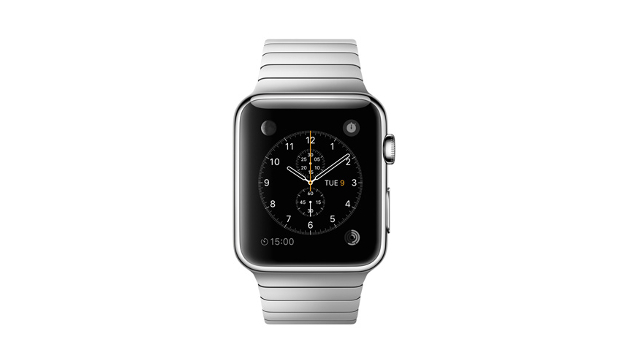 Apple’s Spring Forward event last Monday was about more than the Watch – although it was the star of the show. There were plenty of surprises in home entertainment, computing and even some new additions to iOS. Unlike many product launches where you get a sense that something will be a hit or not, this effort was all good news. Here, in no particular order, are the takeaways.
Apple’s Spring Forward event last Monday was about more than the Watch – although it was the star of the show. There were plenty of surprises in home entertainment, computing and even some new additions to iOS. Unlike many product launches where you get a sense that something will be a hit or not, this effort was all good news. Here, in no particular order, are the takeaways.
Apple TV is a cord cutter’s best friend
I remember the first generation Apple TV, a clunky hard drive that sat under your TV and delivered the content you had on your computer to your TV. The second generation device dropped that idea, turning the device into a rental box with a catalogue that has saved my Christmas for two years in a row where Netflix failed. Now HBO has joined the list of native apps with HBO Now, a subscription-based service with access to its slate of prestige shows like Game of Thrones and Boardwalk Empire.
Getting access to HBO content without having to pay for a premium package from Sky, probe the dark corners of the Web for dodgy streaming websites or wait for the DVD release is manna for ethical cord cutters. US customers will pay $15 a month making it more expensive than Netflix but still cheaper than a cable package. Another reason to ditch the TV licence.
iPhones are good for your health
Apple introduced its Health app in iOS 8. A combination of fitness manager for quantified self nuts obsessed with vital statistics, Health lets you monitor your measurements, sleep cycle, vital signs, heart rate, weight and calorie count. All of this information is valuable not to the user but also to healthcare professionals looking to augment their studies with more participants to make them more reliable. Apple thinks it has solved this problem with a suite of apps called ResearchKit, where users can share their data with researchers working in specific areas.
Distributed computing using multiple PCs to increase processing power for research purposes is nothing new, so applying the same principle to Health users needs only a small leap of logic. Apple is adamant user data will not be accessible by anyone but the parties you are helping. The idea is sound but it’s one scandal away from implosion.
CarPlay proves that slow and steady wins the race
Car manufacturers have been comically slow to embrace CarPlay but Apple says the ability to plug your iPhone directly into your jammer is on the way. Just about every major manufacturer from Ford to BMW to Volkswagen and Volvo have either expressed an interest or are preparing to integrate it into their existing ranges. With Windows integration non-existent and Android Auto yet to gain any official industry support, CarPlay is the only roadworthy software in its class. Apple’s only barriers are user interest and lone holdout Toyota.
The Macbook Air is done
A leftfield announcement was the new 12″ Macbook Pro. Smaller and thinner than the current MacBook Air, it looks like this is the shape of laptops to come from Cupertino. Apple never got on board with the ‘ultrabook’ tag, preferring instead to release the Macbook Air as a premium laptop that was smaller and lighter than anything in its class. Now the MacBook Pro 12″ may have a bigger screen and have a higher price point (it will start at €1,499 compared to the Air’s €1,029) but it has a Retina display with superior resolution (2304×1440 pixel for the Pro versus 1366×768 for the Air), is lighter (.92kg versus 1.08kg), and comes with more memory (8Gb RAM versus a choice of 4Gb or 8Gb). The Air still wins in graphics and ties in storage but the Macbook Pro’s 9-hour battery life and USB-C port (usable for power, data and display output) put it over the top.
With the Air only getting a cursory upgrade it’s hard to see where it fits in with the MacBook product map anymore.
You don’t have to be loaded to get a Watch, but it helps
We already knew what the Apple Watch was going to look like, what the UI interface looked like, it runs iOS and that there would be three models (Sport, Watch and Edition) in the first wave. Now we know pre-orders will begin on 10 April ahead of a 24 release, so long as you live in Australia, Canada, China, France, Germany, Hong Kong, Japan, the UK or the US. We also have confirmed pricing, with the Sport starting at $349, the Watch at $549 and the Edition at $10,000 (not a typo).
With these price points, what will CEO Tim Cook consider a successful launch? Figures from IT Portal and Mac Observer put estimated sales for 2015 between 20 million and 25 million units. Between early adopters, a staggered international release and the Chinese market there will be an appetite for the Watch, whether this transfers over to subsequent iterations is unlikely. People do not swap out their watches like they do mobile phones. Apple will have to treat its Watch product lifespans more like PCs than smartphones.








Subscribers 0
Fans 0
Followers 0
Followers